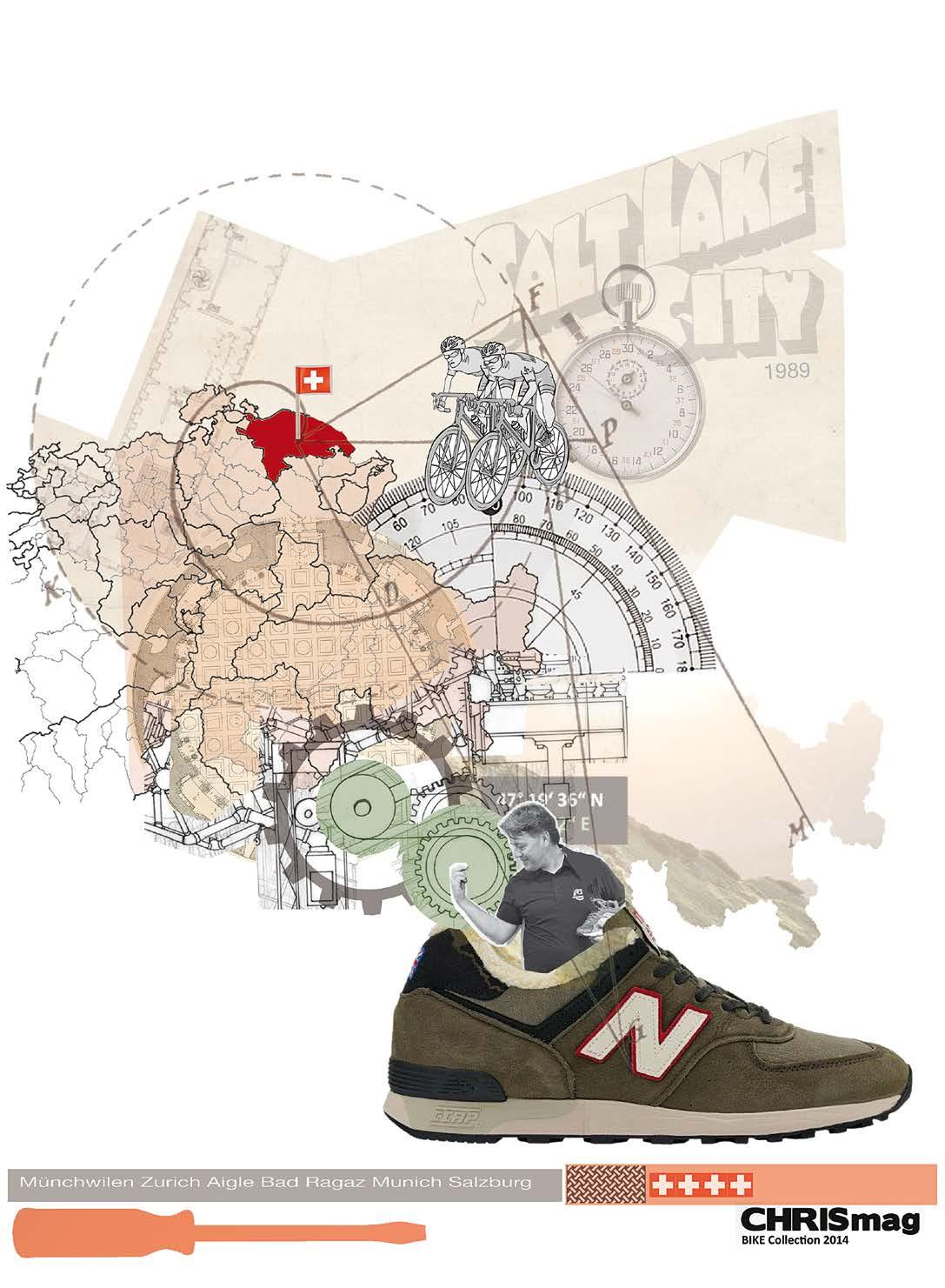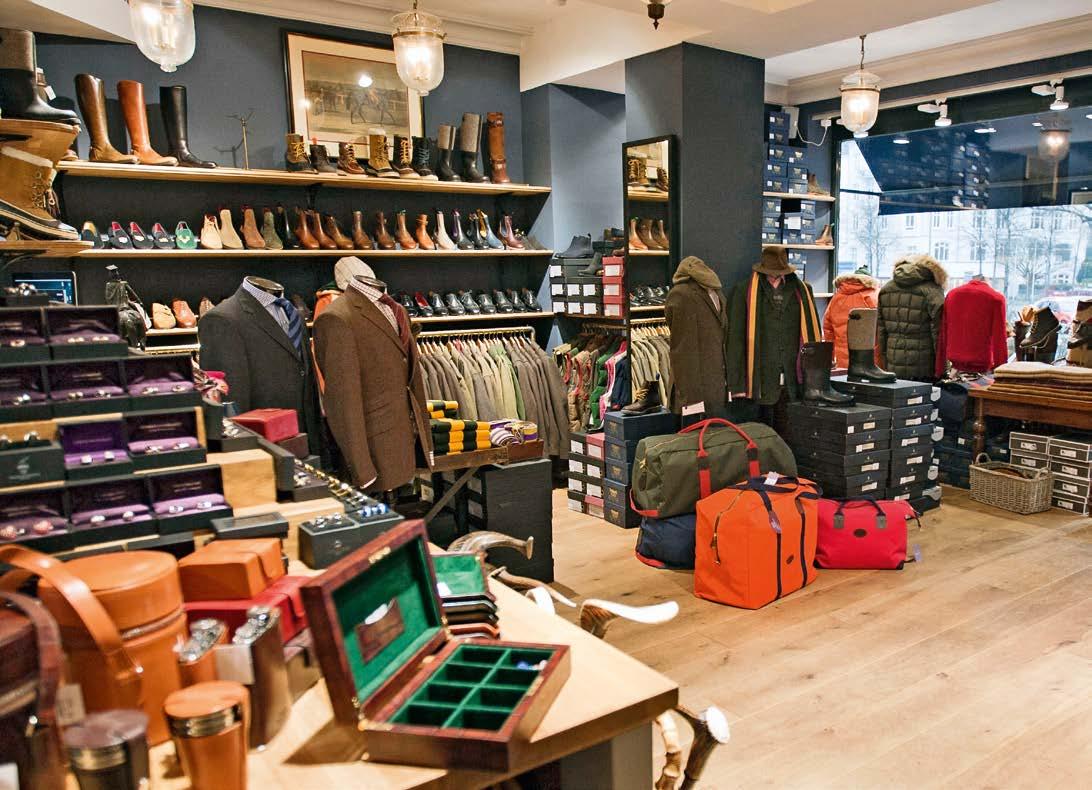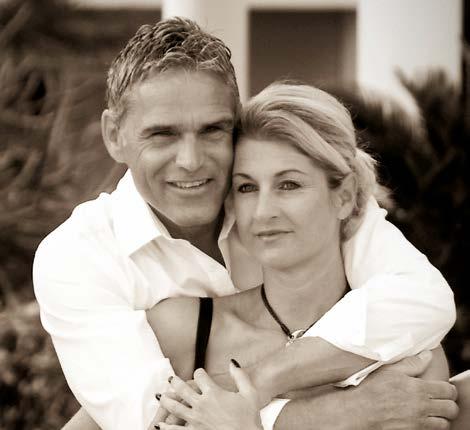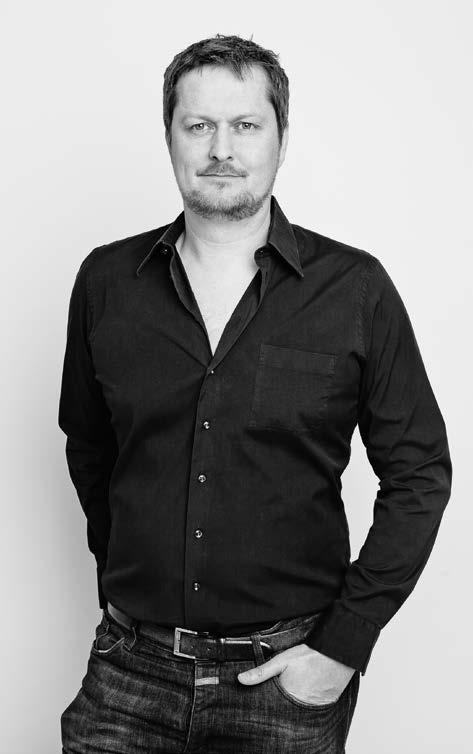
6 minute read
Curating Makes it Sound Like your Work is More
Elizabeth Beer and Brian Janusiak are always on the road to find inspiration for Project No. 8.
Project No. 8 has a reputation for having one of the coolest product ranges in New York. The store’s mix of high-end fashion and art objects is deeply rooted in the lifestyle of owners Elizabeth Beer and Brian Janusiak. They live and work at the intersection of art and design. This is also reflected in their views regarding online retailing. Interview: Petrina Engelke. Photos: Clemens Kois
How did the launch of Project No. 8 come about in 2006?
Brian Janusiak: Elizabeth had designed a line of children’s clothing and then moved on to the fine arts. I had started off in the fine arts and subsequently moved on to the world of graphic design. When we met, we started discussing distribution issues, mainly how ideas spread around the globe and how stores are different to galleries. We thought it would be interesting to create a store space and figure out what it could evolve into. Elizabeth Beer: That was at the time when communication via the Internet really exploded. Online shopping had just burst onto the scene, but fashion-wise people were still hesitant to buy items online without being able to try them on first. Obviously, this is no longer the case. Still, it was kind of retrograde for us to open a stationary store while the development was going the opposite way. We wanted to see where that deliberate step backwards would take us.
You have also created a website with a rather uncommon structure. It is merely an alphabetical list of luxury fashion labels, artists, colours, and random words. How did you come up with that approach?
Brian: Back then, there was no clear definition of what a retail site should look like and how it should work. So we basically designed the site for ourselves based on our own expectations. We wanted everything to be neutral; so we opted for an alphabetical list. That was roughly seven years ago, yet the approach still seems fairly fresh. Elizabeth: A lot of the words weren’t actually products. It wasn’t really commercial, but more of an art project. Brian: Sometimes you would click on something and would just be a thought we had on a topic rather than something to buy. It defied all expectations and created its own set of expectations instead.
What was the response to this website?
Brian: We found that people were really into it. We got fan mail from certain demographic groups who loved that our site was simply doing its own thing. Then the Project No. 8 following started to grow and with it the general idea of a store’s website. Suddenly people started sending

The new website of fashion store Project No. 8 displays product photos in its very own individual manner.
us e-mails saying that they visited our website, but thought it was broken. It was quite obvious really. We no longer appealed to one demographic group and our website did not meet the expectations of the new arrivals. It was never our intention to alienate anyone, which led to the decision to re-launch the site.
What does a retail website need today?
Brian: If you want people to buy things, you need to supply them with images. From a design point of view, there are no clearly defined hierarchies that make perfect sense. We solved this problem by collaborating with photographer Clemens Kois.
Apart from the design, which online retail trends have you identified?
Brian: What we hear retailers talk about most regarding the content is the introduction of an actual storyline. They basically want to become a magazine that sells from its pages. Elizabeth: Many try to create an imitation of a social experience. Brian: You can marvel at a beautiful editorial shoot on a beach depicting beautiful people presenting items you might want to own too. You can tweet your friends about it and, when they visit the site, they might think that they want to own that bag and have that fabulous life on the beach. I think that is what online retailing is about now. I try not to be too cynical about it. I think it’s the right inclination. In our stationary store, you talk about the items on the sales floor, outside the sales floor, and general ideas. Sometimes people leave with purchased items and sometimes they don’t. Sometimes the visitors come back with their friends. This is one of the main reasons why stationary stores still exist (laughs). After the retailers finally grasped what the true
value of a physical sales floor is, they now want to imitate it on- line without it really happening.
Whether online or offline, how do you find the goods you end up buying for your store?
Brian: We just remain open minded. We are always excited to see something we have never seen before or to see something from a different angle. Elizabeth: And we travel a lot. That’s how we discovered that there are many excellent and intelligent fashion designers out there. A lot of them were either not represented in New York at all or harshly underrepresented. Brian: We always want our store to present creations and the ideas behind them. So we only considered objects at the start. During our travels, we realised that “creation” also applies to the clothing industry. We discovered designers such as Boudicca in England, Christian Wijnants and Stephan Schneider in Belgium, and Kostas Murkudis in Germany. They all express some incredibly interesting ideas and their craftsmanship is top class.
Elizabeth also co-runs the Arratia Beer Gallery in Berlin. The term “curating” comes from the art world, but it is now also widely used by fash- ion boutique buyers. Is this an accurate term?
Brian: I don’t think that it is always accurate. I think it is now used to make the buying process sound better and more meaningful. Elizabeth: We do find both equally valuable though. We were always adamant that we don’t run a gallery, but a retail store. Curating is an acade- mic pursuit; it is a very social endeavour. I think people use the term very lazily. “Curating” makes it sound like your work is more meaningful than the world thinks it is. Although I do belie- ve that the buying process can be very meaningful or at least very interesting.
So are you buyers or curators when you put new items into your stores?
Brian: I think we are both. As buyers we make economic deci- sions; we choose items that we know will do well in the shop. However, if we feel that an item can be a great conversation piece on the sales floor, we include that item too. We might even know that nobody is going to buy it, but that doesn’t really matter. In those instances I feel like we are curating. We would
Elizabeth Beer takes the online shop photos into her own hands. love it if people went back to calling things what they are. Unfortunately it’s not like that anymore. In most cases, it is merely buying even though it is called curating.











